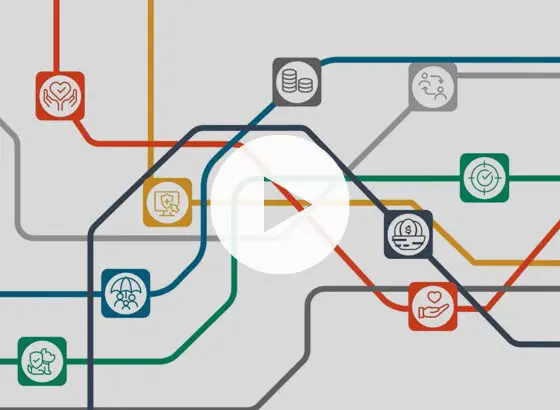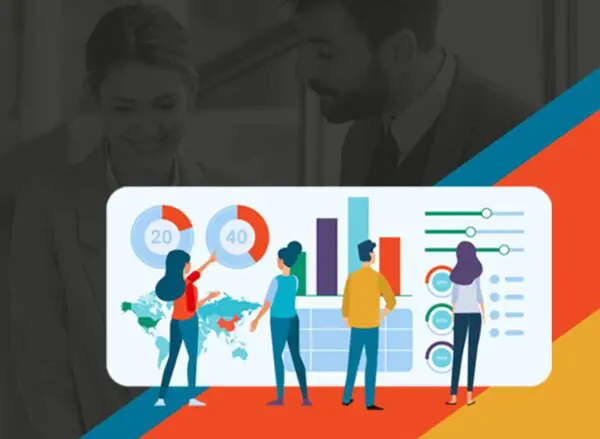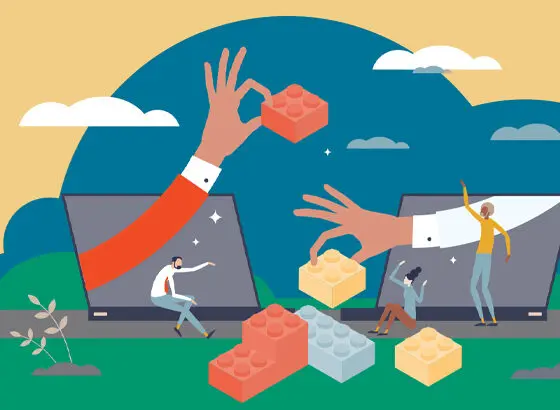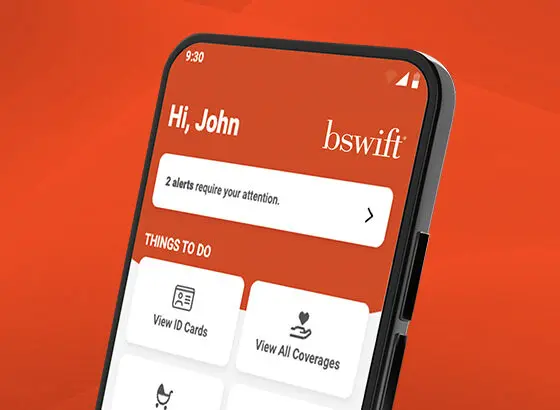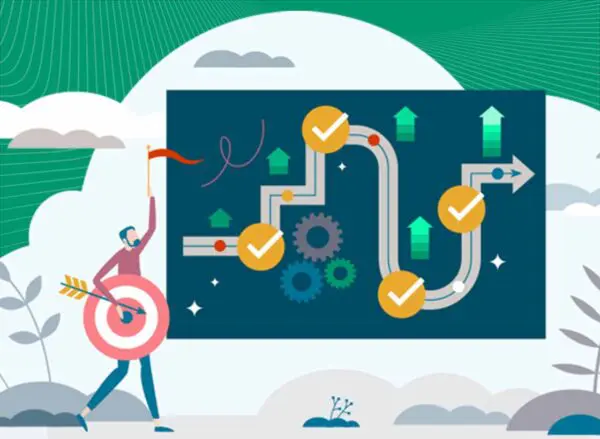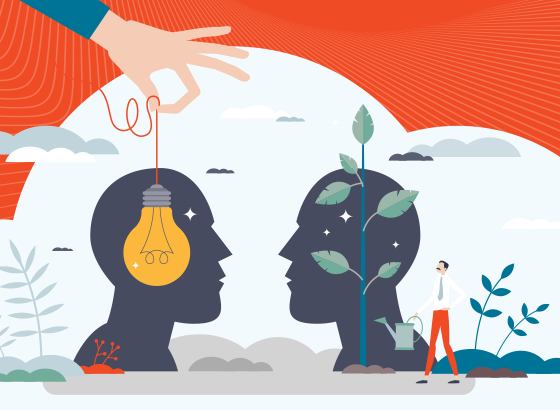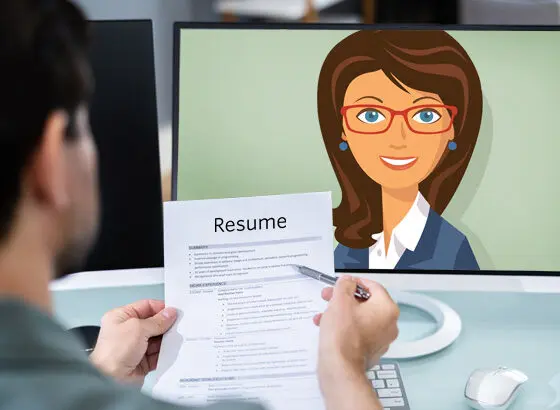Brace yourselves, HR: 2025 is coming in hot. We’ll give you a moment to pick your jaw up off the floor, because employer healthcare spending is expected to keep going up, up, up—nearly 8% in 2025.
That’s the steepest year-over-year climb in more than a decade, according to a survey by Business Group on Health. And stepping further back, healthcare costs have gone up an eye-popping 50% just since 2017. According to the BGH survey, rising costs are the overarching force that’s driving employers to rethink their benefits strategies, ultimately shaping all this year’s HR trends.
And for the HR pros already juggling talent acquisition, compliance needs, and the constant pressure to deliver a standout employee experience, this is just another thing to keep in the air in an already complex juggling routine.
But 2025 isn’t just about addressing rising costs—it’s an opportunity to reframe a variety of challenges as strategic advantages. Tackling these challenges gives HR leaders the chance to not just create workplaces where employees feel supported and engaged but to be that strategic partner whose vision helps the whole organization thrive.
1. Data-Driven Benefits Packages: Tailoring Your Offerings to Employee Needs
The cookie-cutter approach to benefits doesn’t work, and HR is abandoning it.
The days of the generic, one-size-fits-all benefits package have probably been a thing of past already for a hot minute. But in 2025, HR teams are taking things a step further with a data-driven approach to personalizing benefits. These smarter benefits strategies help HR ensure their benefits packages are appealing—and more importantly, engaging—to employees.
The numbers behind this trend tell a pretty compelling story. According to the SHRM Employee Benefits Survey, the sheer variety of benefits being offered has jumped 23% just since 2022. That’s 175 offerings swelling to 216. But quantity isn’t the goal here, quality is. No one is offering all of these benefits. It’s about curating a strategic selection of benefits that your workforce finds valuable.
And companies aren’t just throwing spaghetti at the wall. This is a data-driven exercise. The key is in the balancing act of cost, relevance, and listening to what employees genuinely want.
Smart organizations are tuning in to employee feedback by:
- Running employee surveys that ask the right questions
- Hosting focus groups (with actual focus)
- Analyzing reports like exit interviews and claims data for clues
- Benchmarking their benefits offerings against industry trends
The result? Benefits packages that truly matter. Think menopause support, grandparent leave, or laser-focused financial wellness programs. When HR digs in and listens closely, they can discover which benefits meaningfully improve employee lives—and boost retention in the process.
2. Personalized Wellbeing: Employee Engagement Strategies That Actually Work
Our next HR trend is driven by economic uncertainty, inflation, political and technological upheaval, and all manner of external pressures that are reshaping employee wellbeing. And that is going to require a more nuanced and targeted approach from HR leaders. Growing gaps in how organizations support their workforce’s holistic health, particularly in financial wellness, are beginning to appear. And HR has the opportunity to help.
Employees are experiencing unprecedented levels of economic anxiety, with key challenges:
- 70% of employees see economic instability as the biggest threat to their wellbeing
- 57% of employees say finances are the top cause of stress
- Only 47% of employees trust their employer to help them navigate their financial wellness
- Retirement savings lag far behind actual needs ($64,000 median vs. $1.46 million required)
There’s a real opportunity for HR to provide personalized guidance. Consider how getting the right messages about your benefits at the right time can make a difference: A new parent might receive tailored information about 529 college savings plans. A recent graduate could get strategic advice about managing student loans. A mid-career professional might receive nudges about maximizing 401(k) contributions.
But doing this manually, and for every dimension of wellbeing, is basically impossible.
That’s where innovative approaches like Evive, bswift’s groundbreaking Personalization Engine, come in. Now it’s possible to deliver hyper-personalized, data-driven wellness resources at scale. It’s a smarter benefits strategy that can help every employee through these well-timed nudges that can boost benefits engagement in the physical, personal, emotional, and financial dimensions of employee wellbeing.
3. AI in HR: Balancing HR Tech and the Human Touch
As the AI hype settles down and public sentiment evolves, it’s clear that a thoughtful approach that keeps people in the loop is essential.
With AI here to stay, we need to ensure that it’s used wisely and responsibly—not just applied to anything and everything. When misapplied, AI can feel impersonal and alienating. This is especially true in areas as sensitive as healthcare and benefits administration. At bswift, we see a better way—one that keeps people at the center.
The critical considerations for responsibly integrating AI include:
- Keeping human judgment at the center of your HR tech solutions
- Ensuring fairness, transparency, and inclusivity in HR AI applications
- Rejecting the “set it and forget it” approach to implementation
- Deploying AI as a tool to enhance the work HR does, not to replace anyone
bswift’s Mindful AI™ philosophy provides a concrete framework for navigating this complex terrain. Rather than seeing AI as a substitute for human judgment, the approach positions AI as a powerful tool to make people more effective.
Take bswift’s Emma™ Agent Assistant, for example. It provides our customer service representatives with real-time, personalized insights that make them more efficient and effective, ultimately improving the employee experience. Emma ensures that every interaction is tailored to meet each individual employee’s needs.
AI is a powerful tool, but how it’s implemented matters. Mindful AI strikes a balance—leveraging technology to augment human capabilities while keeping people at the center. That’s how we believe AI should serve people.
4. Workplace Flexibility: Employee Preferences Can Be a Competitive Advantage
Employees have made it clear: hybrid and remote work aren’t perks, they’re priorities.
Despite the best laid return-to-office plans, ultimatums and enticements of the last few years, workers—particularly skilled employees and knowledge workers—aren’t giving up the freedom to work where they want. Embrace it.
For organizations where these arrangements are realistic, embracing it in 2025 is a must. Companies that do are reaping the rewards:
- Hybrid and remote companies are attracting top-tier talent
- Their employees are maintaining strong workplace connections
- Their workers are more engaged and more productive than ever
It’s all thanks to a combination of new tech and work arrangements that improves work-life balance. And it has some organizations starting to rethink other aspects of the traditional work model, too.
These gains have opened the door to thinking about other transformative work models, like the four-day workweek. It’s an idea that promises not just improved employee wellbeing, work-life balance, and reduced carbon footprints, but even a boost to productivity.
In 2024, while some companies considered the idea, others across the world actually trialed four-day workweeks. A new report from Four Day Week Global shows that more than 4 out of 5 employees in the trials said they want to stick with the four-day schedule, and over 90% reported that their overall wellbeing increased.
Many employers are onboard, too. In fact, 73% of employers in the German trial say they are sticking with the modified schedule moving forward.
The ripple effects are profound. Workers get more personal time, more family time, and more rest. And employers see increased morale, lower burnout, lower turnover, and a more committed team.
What’s Next?
All of these shifts underscore a new reality for HR: The days of one-size-fits-all are fading. In their place, HR is creating adaptable frameworks that are a foundation for balance, fulfillment, and sustainable success.
2025 isn’t just another year—it’s a call to action. HR is no longer the “back-office” function, and we sure aren’t pushing paper. HR is the strategic partner that shapes organizations and propels them forward.
By embracing these HR trends—and the challenges that come with them—HR leaders can create workplaces where employees and businesses thrive. And bswift’s Idea Exchange is here to help you do just that—it’s your gateway to insights, tools, and bold ideas to personalize, engage, and thrive in the modern workplace.
So, dust off that strategy notebook, rally your teams, and let’s make 2025 a year to remember. Because the way benefits and workplaces are meant to be isn’t some far off goal with work that happens at some undetermined point in the future. It’s all happening now.
Next Gen HR – Shaping the Future of Work
Change might be constant, but so is opportunity. 2025 is your year to innovate, engage, and thrive while reshaping HR for the modern workplace.
This spring, we’ll explore the people, tech, and bold ideas driving the next generation of HR trends. From personalized employee experiences to engagement strategies that connect, and wellbeing solutions that empower, the future of work is now.
Join us to learn about these HR trends and much more at Idea Exchange (IX), April 30 – May 2, 2025, in sunny Hollywood, Florida!











